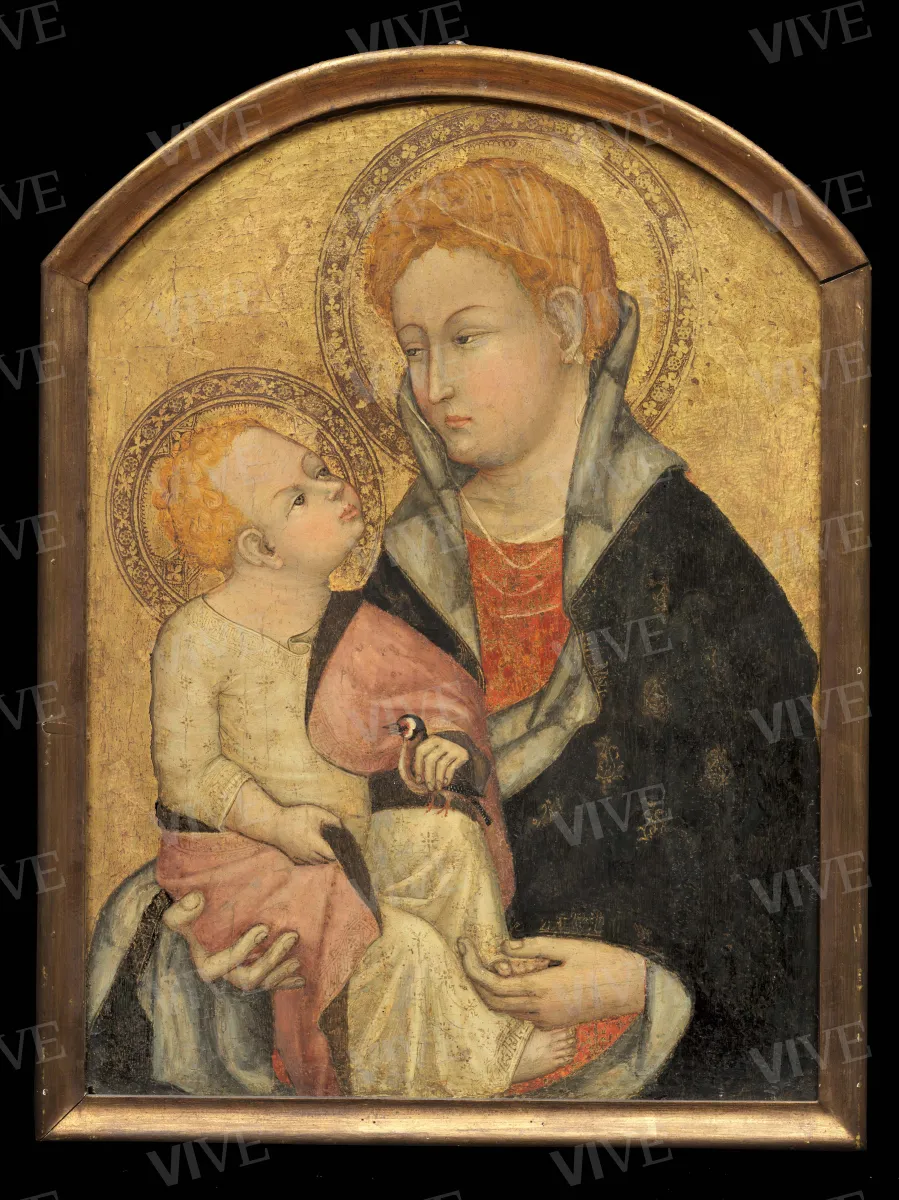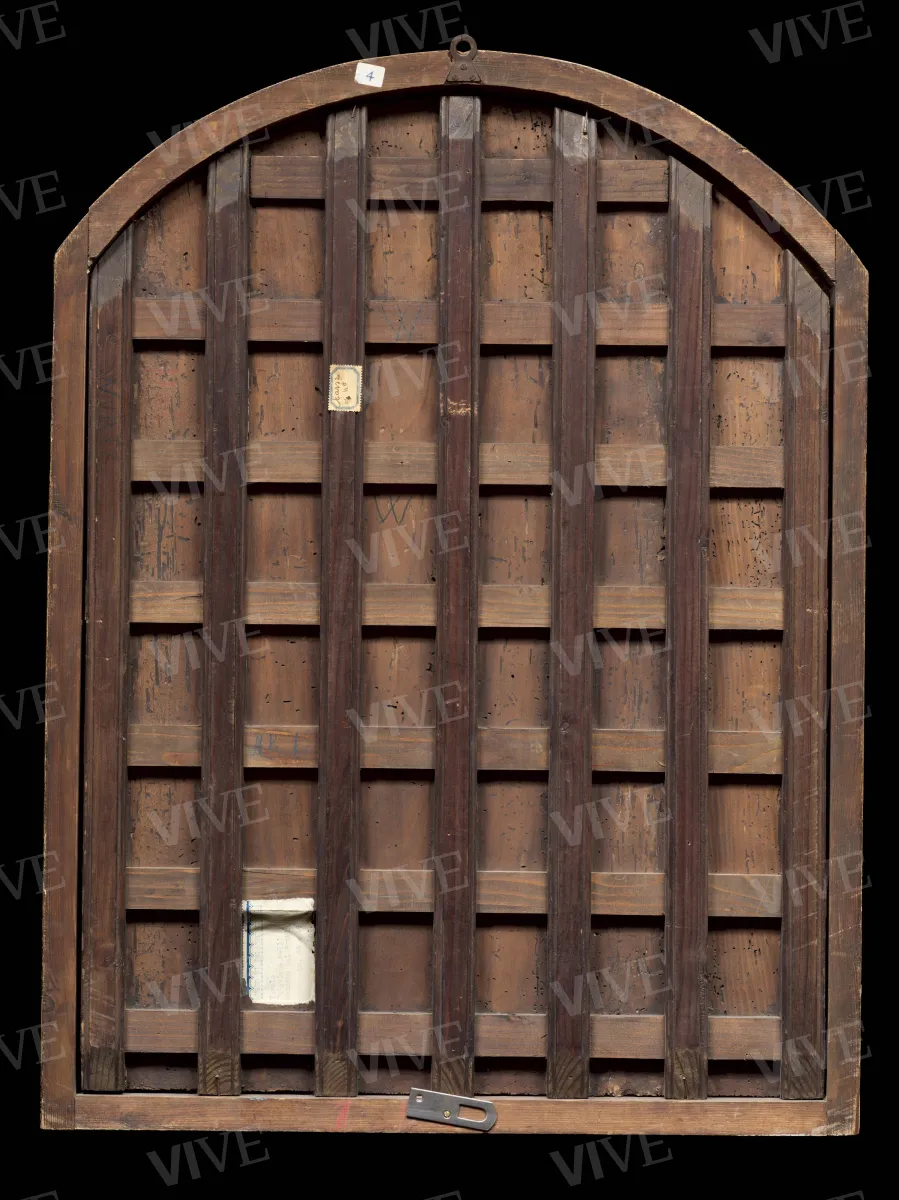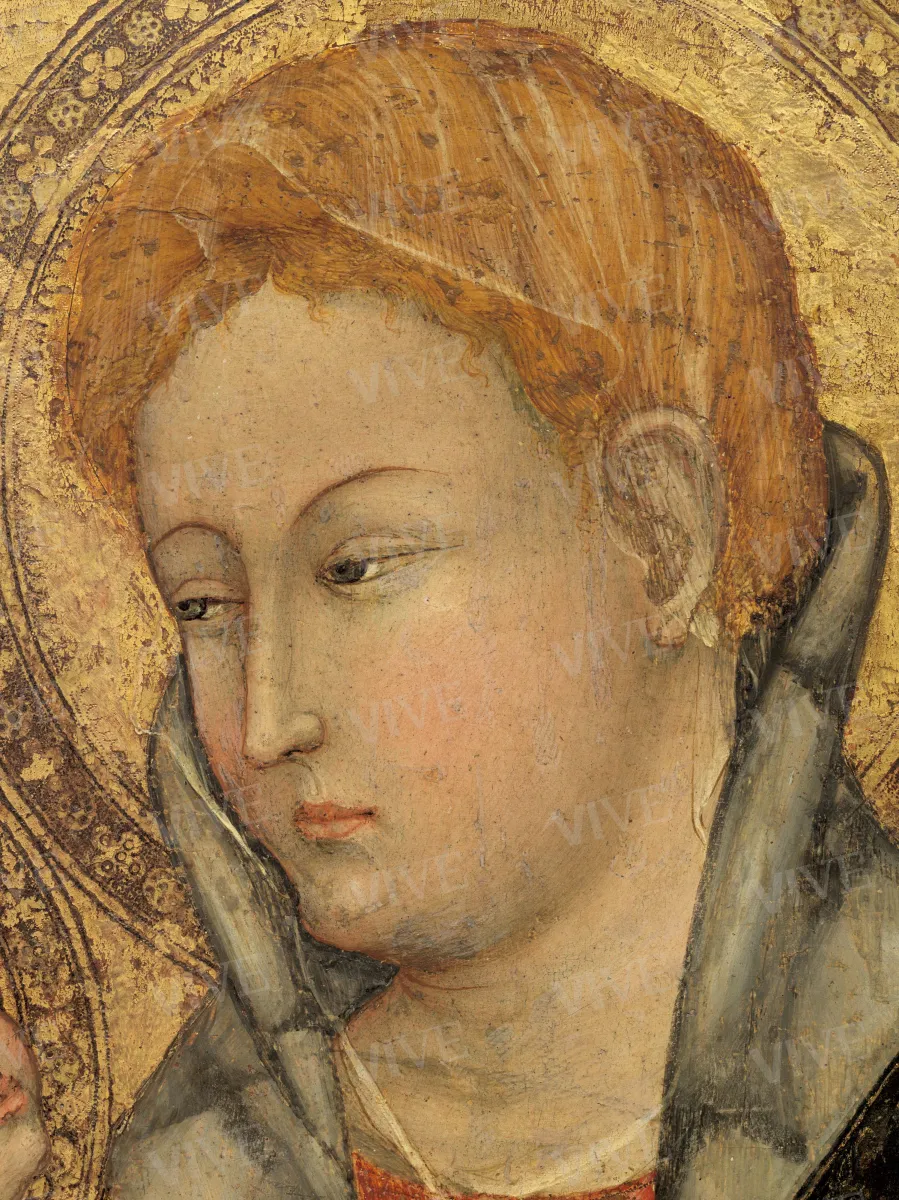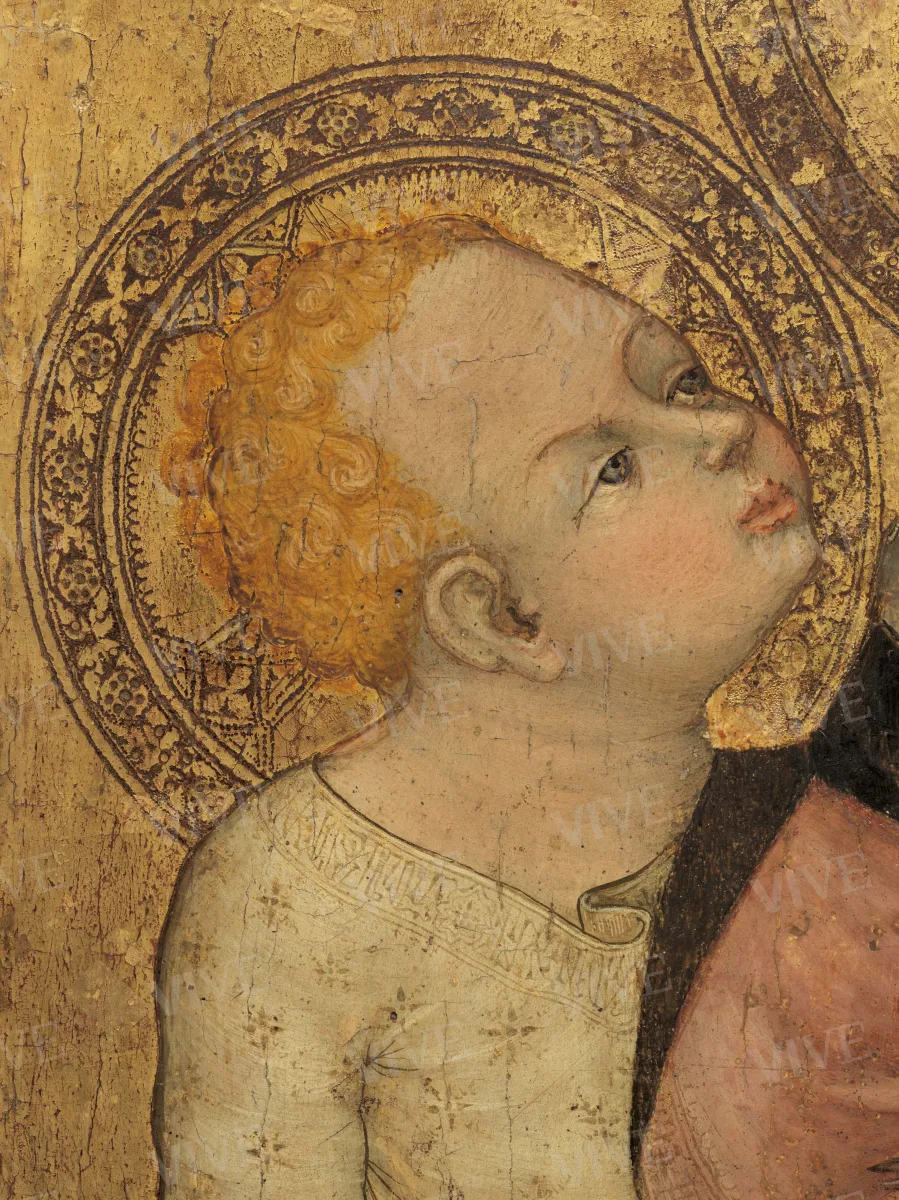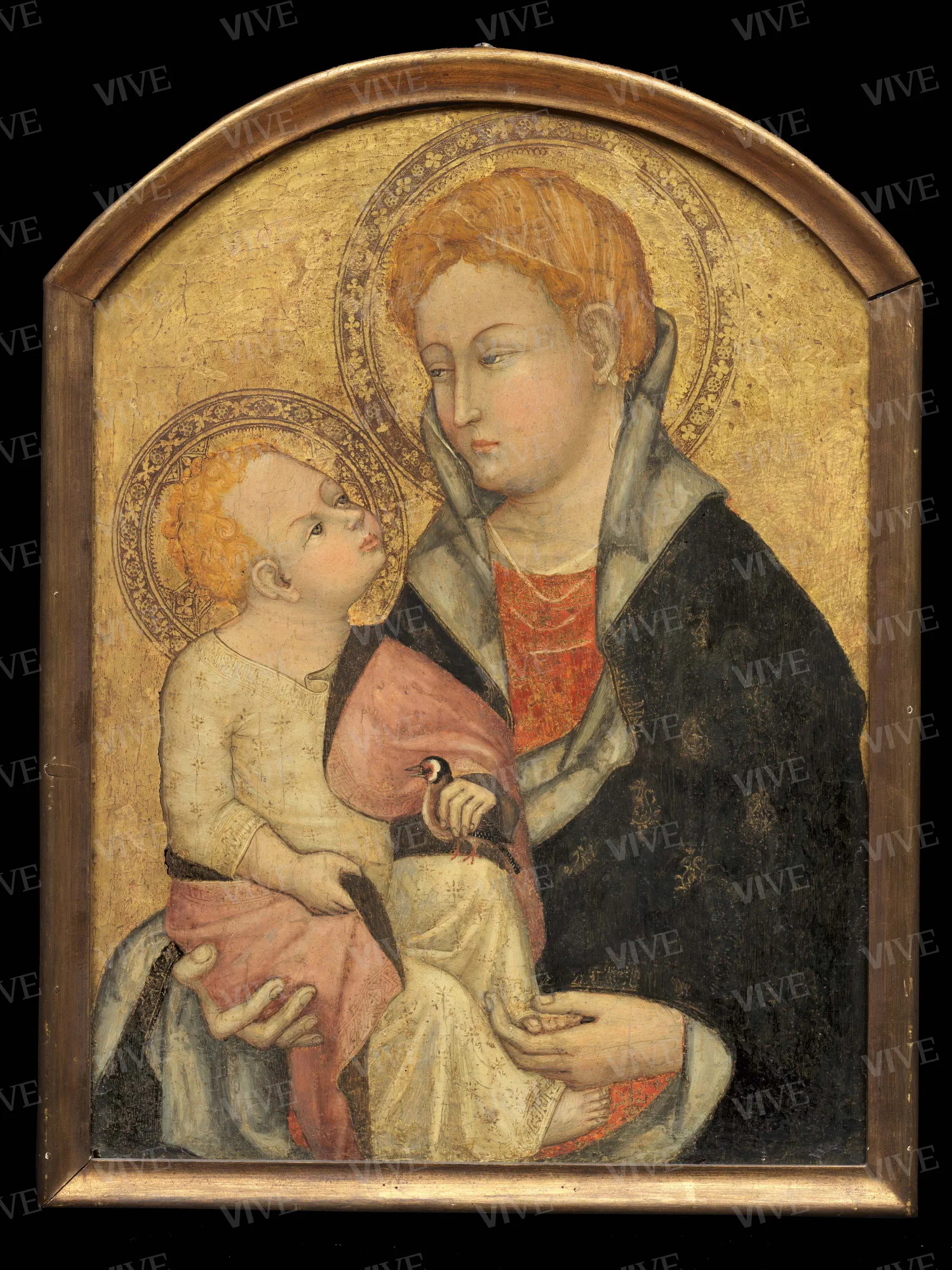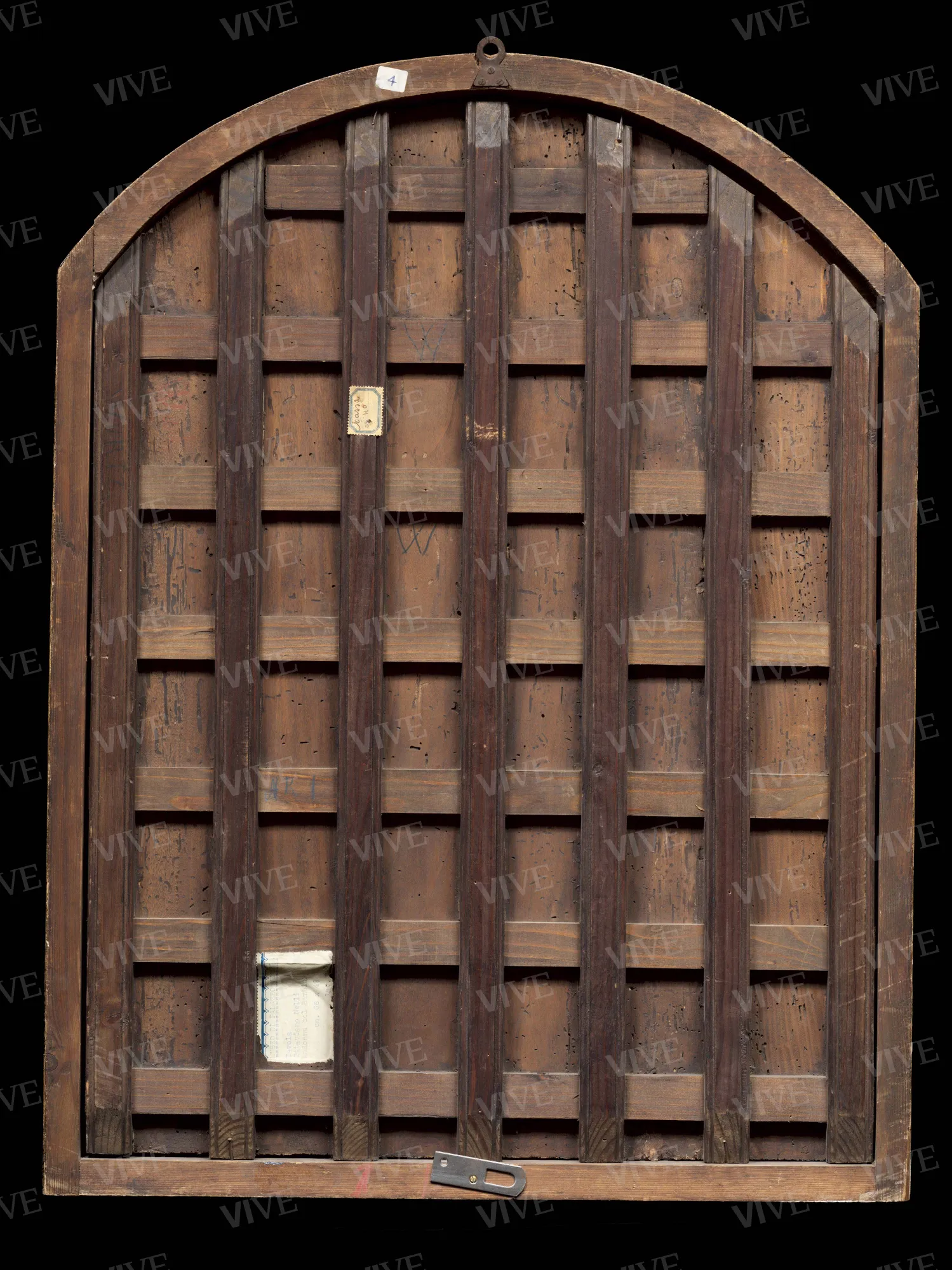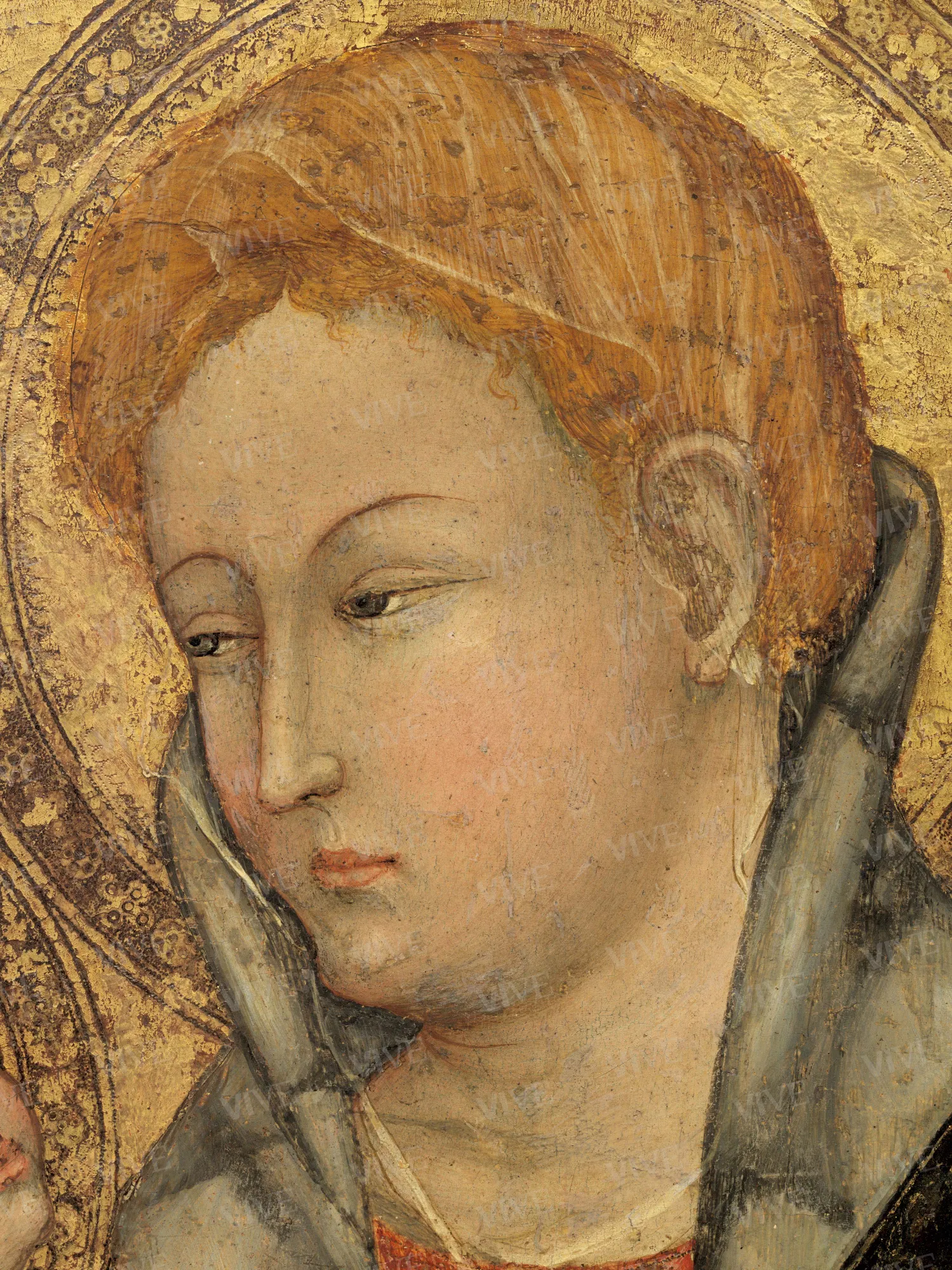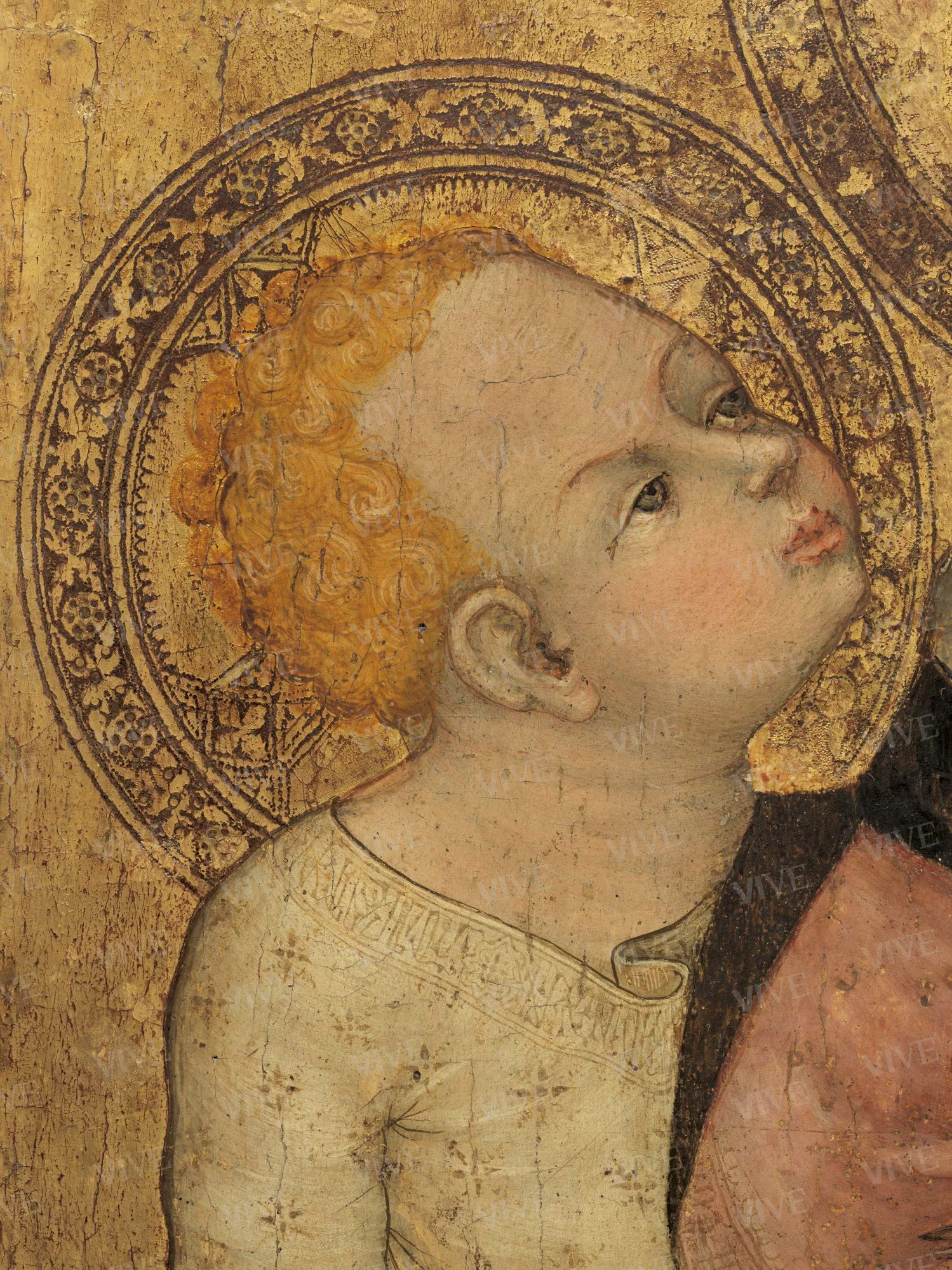Madonna and Child
Ottaviano Nelli C. 1400
The panel is regarded as one of the earliest known works by Ottaviano Nelli, a painter from Gubbio and a prominent figure in the late-Gothic style in Umbria, active during the first half of the fifteenth century. The elaborate workmanship of the gilded surfaces remains notable despite its less-than-ideal preservation, and the thoughtful composition suggests significant patronage. The larger dimensions, compared to Nelli’s smaller devotional pieces, indicate that this work may have originally served as a small standalone altarpiece.
The panel is regarded as one of the earliest known works by Ottaviano Nelli, a painter from Gubbio and a prominent figure in the late-Gothic style in Umbria, active during the first half of the fifteenth century. The elaborate workmanship of the gilded surfaces remains notable despite its less-than-ideal preservation, and the thoughtful composition suggests significant patronage. The larger dimensions, compared to Nelli’s smaller devotional pieces, indicate that this work may have originally served as a small standalone altarpiece.
Details of work
Catalog entry
Ottaviano di Martino di Mello, occasionally referred to as Nello in historical documents, was born in Gubbio before 1370. This is substantiated by his appointment as consul of the Municipality in 1400, a role reserved for individuals aged thirty or older. Although there is no definitive information regarding his education, it is believed to have occurred in Lombardy. The earliest documented evidence of his work places him in Perugia in 1400, where he became acquainted with the works of Cola Petruccioli from Orvieto. His frescoes from this period can be found in Santa Maria Novella or San Benedetto dei Condotti. In 1403, Ottaviano completed the polyptych for the Augustinians of Pietralunga, which is his only signed wooden artwork and is currently housed in the Galleria Nazionale dell’Umbria in Perugia. The Madonna del Belvedere (found in Santa Maria Nuova, Gubbio) is typically attributed to the same timeframe. Commissioned by wool merchant Antonio di Mucciolo, this remarkable mural masterpiece inspired the romantic notion of Nelli as the founder of the Umbrian school during the nineteenth century. In the ensuing decades, he specialized in creating extensive cycles of frescoes, through which he effectively showcased his joyful and clever narrative style. The widespread recognition he gained in this domain explains the dissemination of his significant pictorial works not only in the churches of his native city (Sant’Agostino, San Francesco, San Domenico, Santa Maria della Piaggiola) and various locations across Umbria (Foligno, Assisi, Città di Castello), but also in Malatesta Fano, as well as Urbino, the city of the Counts of Montefeltro who assumed control over Gubbio in 1384 and with whom Ottaviano maintained close relationships. Conversely, his production of small devotional sculptures was more restricted. Notable among these is the Madonna of Humility, crafted for a member of the Accomanducci family (currently housed in the Musée du Petit Palais, Avignon). His creation of altarpieces also merits attention, particularly the Crucifixion and Annunciation made for the Franciscans at Covignano near Rimini. Additionally, there are two dismembered polyptychs: one intended for a similarly Franciscan audience (now divided among Williamstown, Vatican City, Avignon, and Florence) and another minor one of uncertain origin (distributed between Hanover and a private collection). Ottaviano passed away at an advanced age between 1448 and 1449. Before his death, he trained several dedicated pupils who collaborated on his larger projects and continued popularizing his style well into the latter half of the century. Among these students, Jacopo Bedi’s influence is increasingly evident, whereas Domenico di Cecco remains enigmatic. The panel, previously encased in a now-removed neo-Gothic frame (Minardi 2017), is currently displayed in a simple molded gilded wood frame with a markedly lowered arch shape that largely appears to be inauthentic. Ottaviano Nelli’s mobile paintings preserved in their original form typically feature triangular cusps, sometimes with inscribed round or trefoil arches. The support displays a vertical grain and has been cropped at both the top and bottom. Its large size, greater than Nelli’s personal devotional panels (the largest being a Madonna and Blessing Child between Two Angels now in a private collection, a cusped panel measuring 61x32 cm), suggest the work originally intended as a small stand-alone altarpiece (Minardi 2017).
Despite the suboptimal conservation, the original surface decoration's remarkable richness remains evident. The halos, though now blackened, predominantly feature freehand decorations with rows of small arches and floral and leaf motifs against a granite background. The garments are adorned with mission gold ornaments, even along the hems. The Virgin’s red tunic is rendered using the sgraffito technique, revealing the gold underneath and finishing it with graining. This exquisite level of craftsmanship indicates an illustrious patron. The Madonna is depicted wearing a large fur-lined cloak that extends over her neck, accompanied by a light veil that transparently falls from her blonde hair onto her chest. She supports the Child with her right hand while grasping one of his feet with her left. The baby Jesus, engaged in a silent dialogue with his mother, holds a goldfinch in his left hand and raises a corner of his pink cape with the other. The inlay of colors in the central area of the painting is particularly beautiful.
The painting is consistently attributed to the early stages of Nelli’s career, with dating estimates ranging from the late fourteenth century, which would make it the oldest extant work by Nelli (as suggested by Rossi, 1977; Silvestrelli, 1996), to the period between 1403 and 1408 (per Roli, 1965). The latter date aligns with the controversial chronology of the Madonna del Belvedere. Recent scholarship (Minardi, 2017; De Marchi, 2021) suggests a date of circa 1400, near the time of the Pietralunga polyptych, which is dated 1403.
Matteo Mazzalupi
Entry published on 27 March 2025
State of conservation
Fair.
Coats of arms, emblems, and marks
Label on the back: “Cassa n. 40”;
written in red on the back: “Wurts.”
Provenance
Rome, Reverend Robert J. Nevin, until 1906;
Rome, Galleria Sangiorgi, sale of the Nevin Collection, April 22–27 1907, lot 316;
Rome, George W. Wurts, until 1928;
Rome, Henriette Tower-Wurts, 1928–1933;
Rome, Tower-Wurst donation, 1933.
Exhibition history
Rome, Palazzo Venezia; Rome, Gallerie Sacconi al Vittoriano, Voglia d’Italia. Il collezionismo internazionale nella Roma del Vittoriano, December 7, 2017–March 4, 2018.
References
Mason Perkins Frederick, in Mason Perkins Frederick, Tenneroni Annibale, Ridolfi Lavinio, Catalogo della vendita della collezione del fu Reverendo dottor Roberto I. Nevin, Roma 1907, p. 48, n. 316;
Santangelo Antonino (a cura di), Museo di Palazzo Venezia. Catalogo. 1. Dipinti, Roma 1947, p. 33;
Roli Renato, Un dossale di Ottaviano Nelli, in «Arte antica e moderna», 8, 1965, pp. 165-168;
Rossi Francesco, Ottaviano Nelli: note per la biografia di un pittore di corte, in «L’arte», giugno-settembre 1967, pp. 3-33;
Rossi Francesco, Lo “stile feltresco”: arte tra Gubbio e Urbino nella prima metà del ’400, in Rapporti artistici fra le Marche e l’Umbria, Atti del convegno (Fabriano-Gubbio, 8-9 giugno 1974), Perugia 1977, pp. 55-68, nota 19;
Todini Filippo, La pittura umbra dal Duecento al primo Cinquecento, I, Milano 1989, p. 236;
Sannipoli Ettore A., Ottaviano Nelli al tempo della Piaggiola (documenti ed opere), in Apa Mariano (a cura di), Incrocio/Incontro. Artisti a Fossato di Vico, catalogo della mostra (Fossato di Vico, centro storico, 4-28 agosto 1991), Perugia 1991, pp. 35-38;
Silvestrelli Maria Rita, Il primo tempo di Ottaviano Nelli fra novità e tradizione, in «Annali. Fondazione di studi di storia dell’arte Roberto Longhi, Firenze», III, 1996, pp. 39-49, nota 14;
Minardi Mauro, Lorenzo e Jacopo Salimbeni. Vicende e protagonisti della pittura tardogotica nelle Marche e in Umbria, Firenze 2008, p. 27;
Silvestrelli Maria Rita, ad vocem Nelli, Ottaviano, in Dizionario biografico degli italiani, LXXVIII, Catanzaro 2013, www.treccani.it/encliclopedia/ottaviano-nelli_(Dizionario-Biografico)/>;
Fachechi Grazia Maria, George Washington Wurts, Henriette Tower, una collezione “di curiosità e opere d’arte” e una villa “magnificent, the handsomest ever bestowed on Rome”, in Perini Folesani Giovanna, Ambrosini Massari Anna Maria (a cura di), Riflessi del collezionismo, tra bilanci critici e nuovi contributi, Atti del convegno (Urbino, 3-5 ottobre 2013), Firenze 2014, pp. 339-357;
Minardi, in Pellegrini Emanuele (a cura di), Voglia d’Italia. Il collezionismo internazionale nella Roma del Vittoriano, catalogo della mostra (Roma, Palazzo Venezia; Roma, Gallerie Sacconi al Vittoriano, 7 dicembre 2017-4 marzo 2018), Napoli 2017, pp. 196-197, n. 3.3;
De Marchi Andrea, Il caleidoscopio di Ottaviano Nelli, pittore del suo tempo, in De Marchi Andrea, Silvestrelli Maria Rita (a cura di), Oro e colore nel cuore dell’Appennino. Ottaviano Nelli e il ’400 a Gubbio, catalogo della mostra (Gubbio, Palazzo Ducale, Palazzo dei Consoli, 23 settembre 2021-9 gennaio 2022), Cinisello Balsamo 2021, pp. 13-65.

